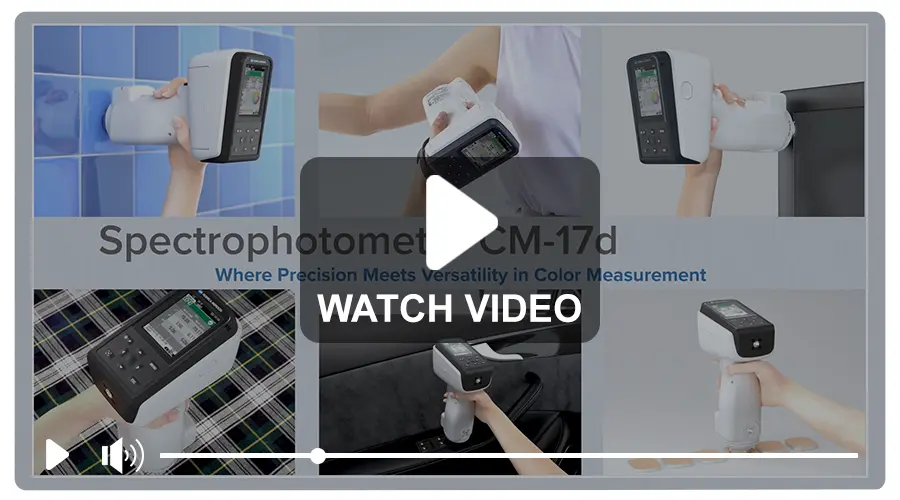Pengukuran Warna Interior Otomotif dengan Spektrofotometer

Industri otomotif menuntut kesempurnaan dalam setiap aspeknya Pembuatan kendaraan, dan komponen interior tidak terkecuali. Konsistensi dan akurasi warna pada interior otomotif, baik itu dasbor, jok, trim, atau panel, sangat penting untuk mencapai tampilan yang kohesif. Setiap variasi warna dapat mengganggu keharmonisan estetika interior dan pada akhirnya memengaruhi persepsi pelanggan terhadap kualitas. Namun, mempertahankan keseragaman warna di berbagai bahan, lapisan akhir, dan kelompok produksi merupakan tantangan. Untuk mengatasi tantangan ini, produsen harus menerapkan praktik manajemen warna yang ketat dan mengandalkan instrumen pengukuran warna canggih seperti spektrofotometer.
Pemilihan Spektrofotometer untuk Pengukuran Warna Interior Otomotif yang Akurat
Spektrofotometer merupakan instrumen yang sangat diperlukan untuk mengukur dan menjaga konsistensi warna. Namun, tidak semua spektrofotometer cocok untuk setiap material atau aplikasi.geometri Spektrofotometer memainkan peran penting dalam menentukan efektivitas pengukuran warna. Misalnya, spektrofotometer dengan geometri 45°/0° mensimulasikan cara mata manusia melihat warna dengan menyinari sampel pada sudut 45 derajat dan menangkap cahaya pantulan pada 0 derajat. Konfigurasi ini cocok untuk menilai tampilan bahan dengan permukaan seragam, seperti plastik yang dicat atau kulit halus, dan sering digunakan untuk inspeksi kualitas visual akhir.
Jenis geometri lainnya adalah geometri d/8°. Spektrofotometer yang menggunakan geometri d/8° memberikan iluminasi difus dan menangkap cahaya pantulan pada sudut 8 derajat. Pengaturan ini meminimalkan pengaruh kilap atau tekstur permukaan, dengan berfokus pada warna intrinsik material. Spektrofotometer d/8° ideal untuk mengukur permukaan bertekstur atau mengilap, seperti plastik berurat, kain, atau kulit dengan lapisan alami, di mana karakteristik permukaan dapat mempengaruhi pengukuran warna.
Salah satu keuntungan spektrofotometer d/8° adalah kemampuannya untuk mengukur dalam Mode Komponen Specular Termasuk (SCI) dan Komponen Specular Dikecualikan (SCE) Mode-mode ini penting untuk memperoleh data warna yang komprehensif. Misalnya, mode SCI mencakup semua pantulan, termasuk pantulan spekular dan difus, yang menangkap warna “asli” dari material tanpa mempertimbangkan pengaruh kilap atau tekstur permukaan. Sebaliknya, mode SCE mengecualikan pantulan spekular, yang menyediakan pengukuran yang selaras dengan bagaimana warna material muncul saat kilap dan tekstur permukaan diperhitungkan. Mode ini sangat berharga untuk mengevaluasi warna material yang dipersepsikan sebagaimana yang akan terlihat oleh mata manusia. Dengan bergantian antara pengukuran SCI dan SCE, produsen dapat secara efektif menilai akurasi warna intrinsik dan tampilan visual komponen interior otomotif.
Manajemen Warna Interior Otomotif yang Efektif
Manajemen warna dalam industri otomotif jauh melampaui penggunaan spektrofotometer. Manajemen warna memerlukan pendekatan holistik untuk mempertahankan warna yang konsisten di seluruh komponen interior. Untuk mencapai konsistensi ini, diperlukan pengukuran yang tepat, kolaborasi antara pemangku kepentingan, dan pemantauan berkelanjutan di seluruh proses produksi.
Sebuah landasan yang efektif manajemen warna adalah penetapan standar warna yang ketat dan toleransi Standar-standar ini bertindak sebagai titik acuan, memastikan setiap komponen interior selaras dengan desain dan identitas merek yang dimaksudkan. Toleransi, ditentukan oleh parameter seperti Nilai L*a* b* atau nilai ΔE*ab, menguraikan rentang variasi yang dapat diterima dari warna target. Menetapkan toleransi warna yang ketat memungkinkan produsen untuk menegakkan standar kualitas tinggi sekaligus memfasilitasi kolaborasi yang lancar dengan pemasok. Ini juga membantu mengurangi kesalahan produksi, meminimalkan limbah, dan meningkatkan efisiensi rantai pasokan global, memastikan operasi yang efisien dan produk akhir yang konsisten.
Solusi Pengukuran Warna Konica Minolta untuk Interior Otomotif
Konica Minolta Sensing, pemimpin dalam solusi pengukuran canggih, menyediakan berbagai instrumen pengukuran warna yang tepat dan andal yang dirancang untuk evaluasi terperinci komponen interior otomotif. Di antaranya adalah Spektrofotometer Konica Minolta CM-17d, spektrofotometer ad/8° dengan desain penyelarasan vertikal. CM-17d memberikan kinerja luar biasa dengan perjanjian antar instrumen (IIA) ΔE*ab < 0,12 dan pengulangan ΔE*ab < 0,02, memastikan pengukuran warna yang konsisten dan akurat di seluruh rantai pasokan global. Dilengkapi berbagai persamaan toleransi warna yang dikonfigurasi dalam instrumen dan jendela bidik elektronik untuk pratinjau waktu nyata, CM-17d menyederhanakan posisi sampel sekaligus memastikan hasil pengukuran yang akurat. Instrumen penting lainnya termasuk 45°/0° Spektrofotometer CM-25cG dan d/8° Spektrofotometer CM-26dG Spektrofotometer ini memiliki desain yang ramping dan ergonomis yang memudahkan pengukuran di area yang sulit dijangkau, seperti ruang sempit di dasbor dekat kaca depan. CM-26dG dan CM-25cG menawarkan IIA dan pengulangan yang tinggi, persamaan toleransi warna yang telah dikonfigurasi sebelumnya, dan sensor kilap 60° terintegrasi untuk pengukuran warna dan kilap secara bersamaan.

Spektrofotometer CM-17d (kiri), Spektrofotometer CM-26dG (tengah), dan Spektrofotometer CM-25cG (kanan).
TONTON VIDEONYA
Selain pengukuran warna, Konica Minolta Sensing menawarkan portofolio lengkap solusi pengukuran canggih, termasuk kolorimeter/fotometer pencitraan, spektrometer, penganalisis warna tampilan, pengukur iluminasi, pengukur kilap, dan pengukur keunikan gambar (DOI). Jelajahi rangkaian lengkap solusi pengukuran canggih kami untuk industri otomotif Di Sini.
Tidak yakin spektrofotometer mana yang tepat untuk mengukur warna interior otomotif Anda? Hubungi kami untuk konsultasi gratis, dan biarkan para ahli kami membantu Anda menemukan solusi ideal.



